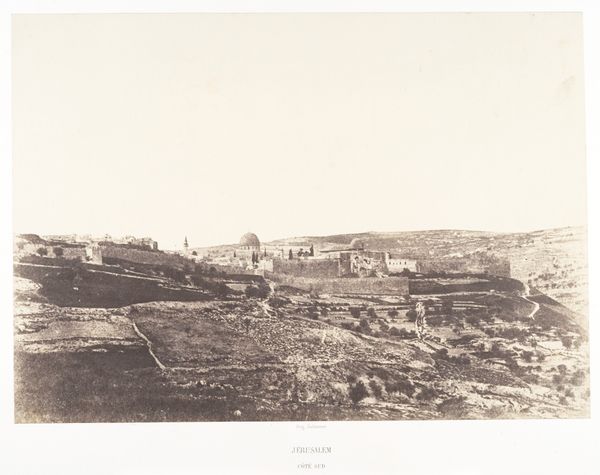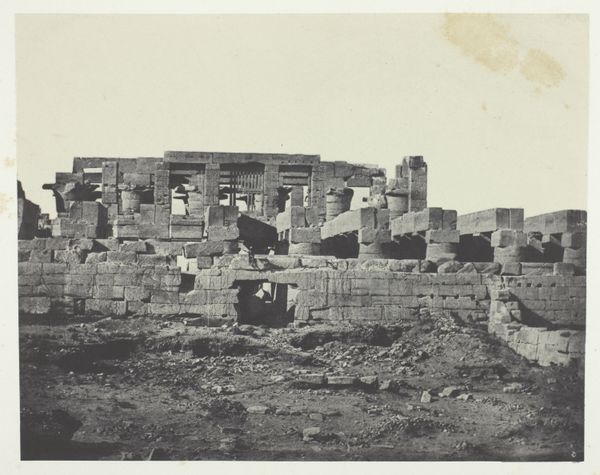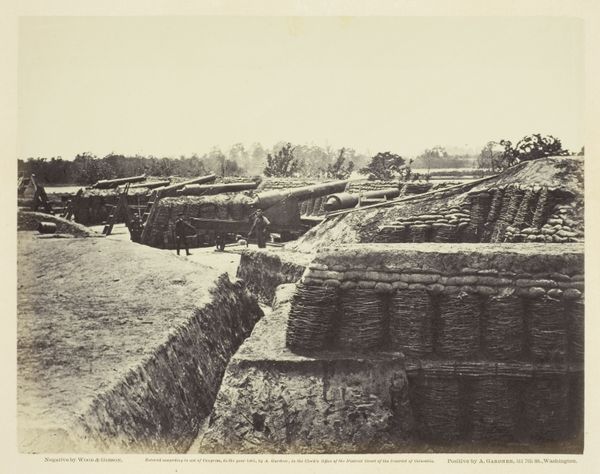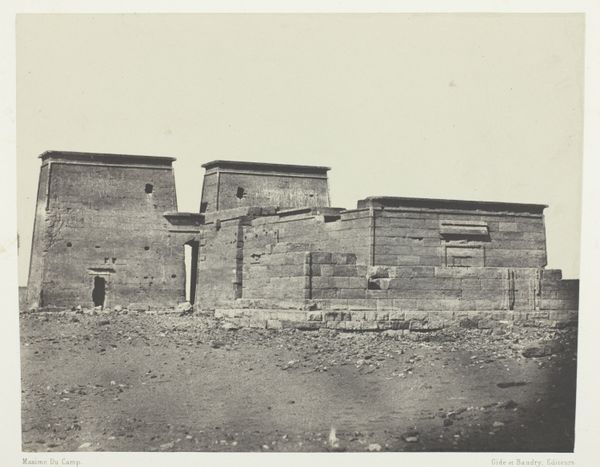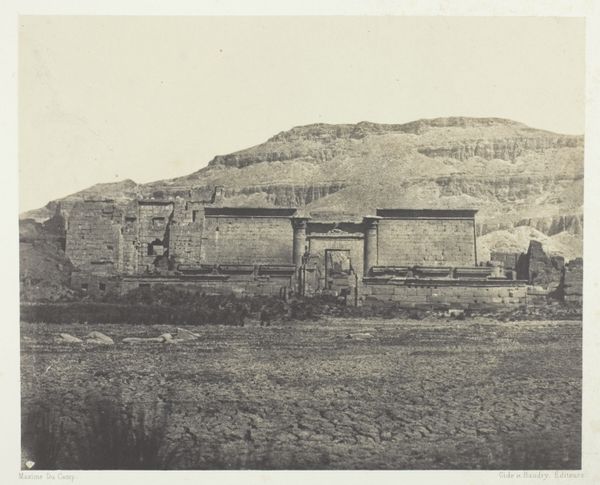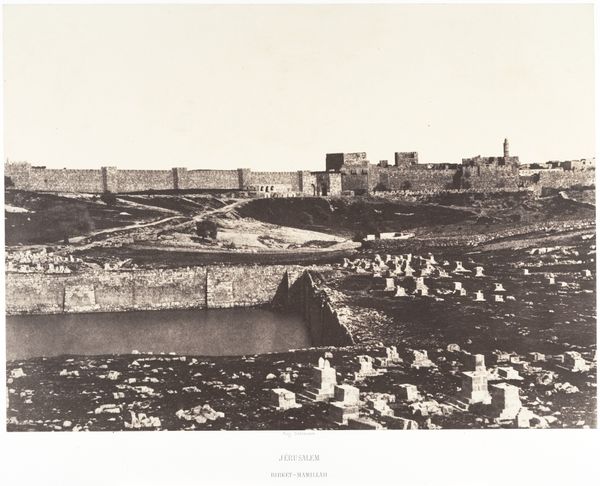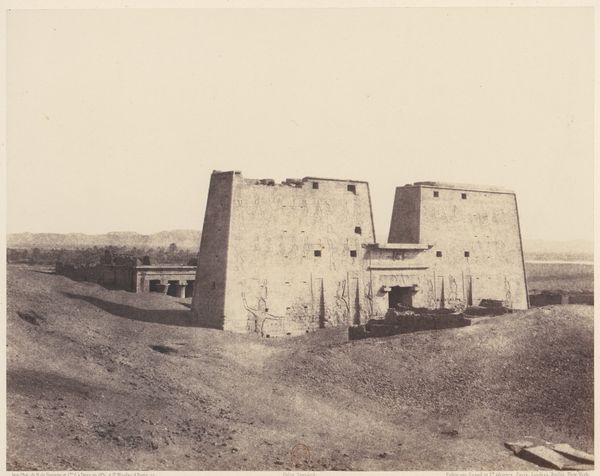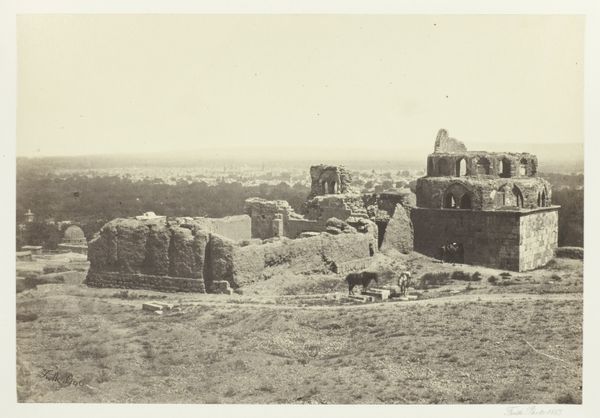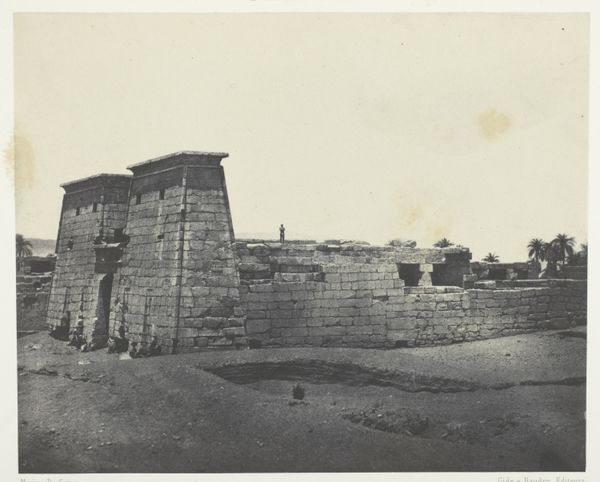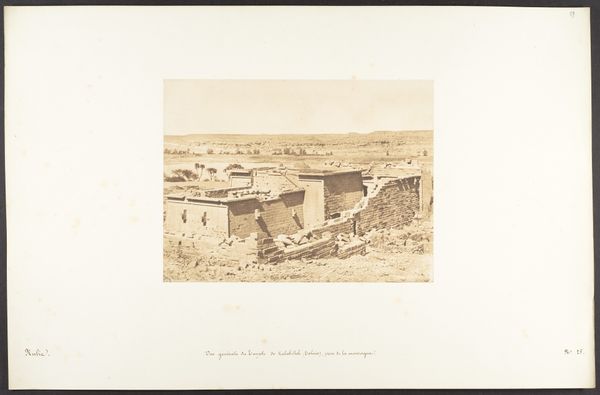
Kalabscheh, Vue Générale du Temple de Kalabscheh (Talmis); Nubie Possibly 1849 - 1852
0:00
0:00
print, paper, photography, gelatin-silver-print
#
print photography
#
16_19th-century
#
natural tone
# print
#
landscape
#
ancient-egyptian-art
#
paper
#
photography
#
egypt
#
ancient-mediterranean
#
gelatin-silver-print
#
france
Dimensions: 16.1 × 21.5 cm (image/paper); 30.1 × 42.9 cm (album page)
Copyright: Public Domain
This photograph of the Temple of Kalabscheh in Nubia was made by Maxime Du Camp, using the calotype process. This early photographic technique involved coating paper with silver iodide, exposing it in a camera, and then developing it to create a negative, allowing for multiple prints. Notice the soft, slightly blurred quality of the image, a characteristic of the calotype due to the paper’s texture. The warm, sepia tones speak to the chemical processes at play, distinct from the sharp precision of later photographic methods. Du Camp’s choice of this technology was quite deliberate, as it offered a then-contemporary means of documenting the temple, a task previously reliant on laborious drawings or engravings. Beyond aesthetics, consider the social implications; photography democratized image-making, challenging the established hierarchies of artistic production. The amount of work involved – from preparing chemicals to arduous travel – highlights the dedication required in early photography. Ultimately, Du Camp’s photograph embodies a pivotal moment in the intersection of art, science, and society, expanding our understanding of both the temple and the evolving technologies used to represent it.
Comments
No comments
Be the first to comment and join the conversation on the ultimate creative platform.
